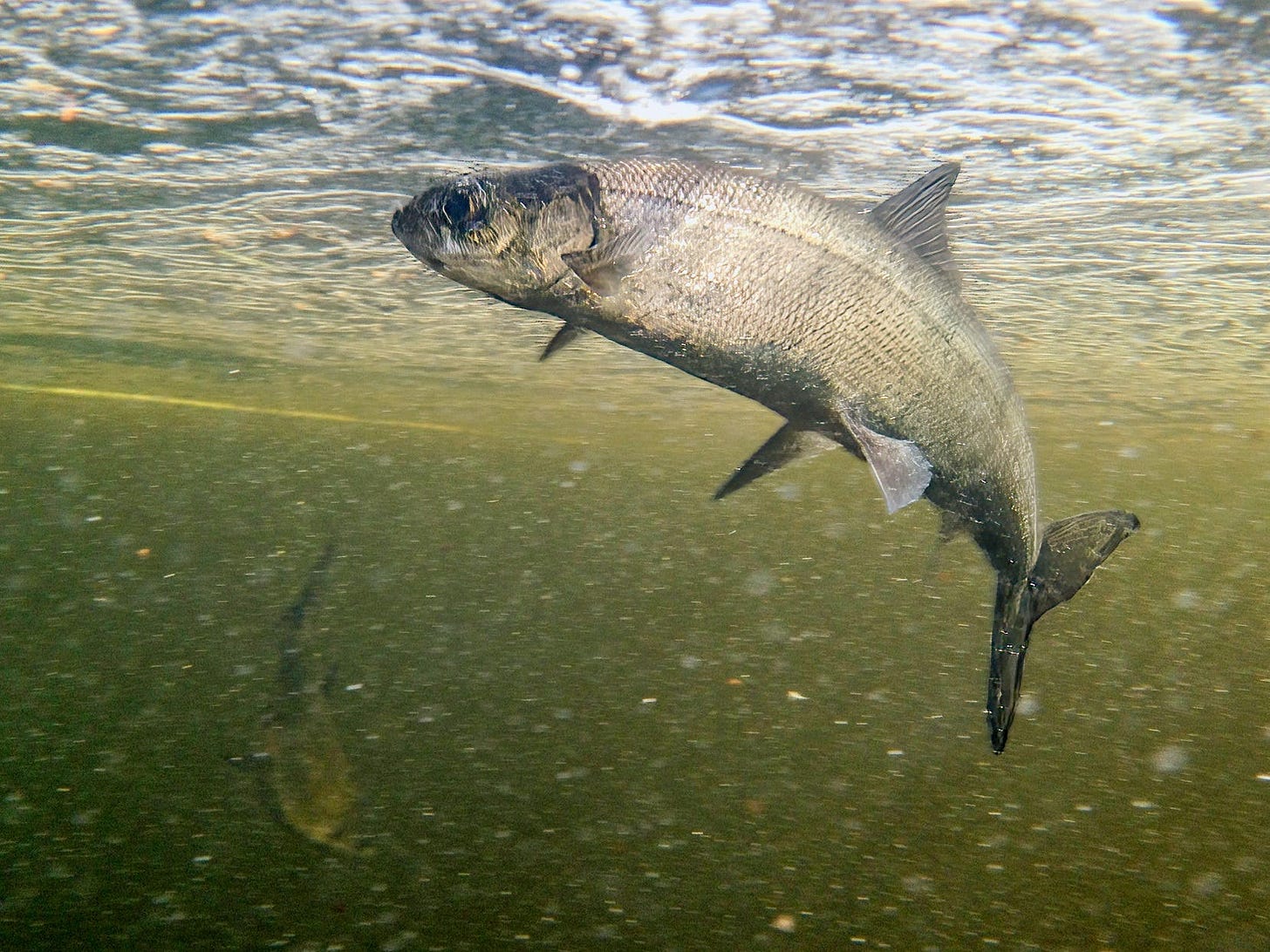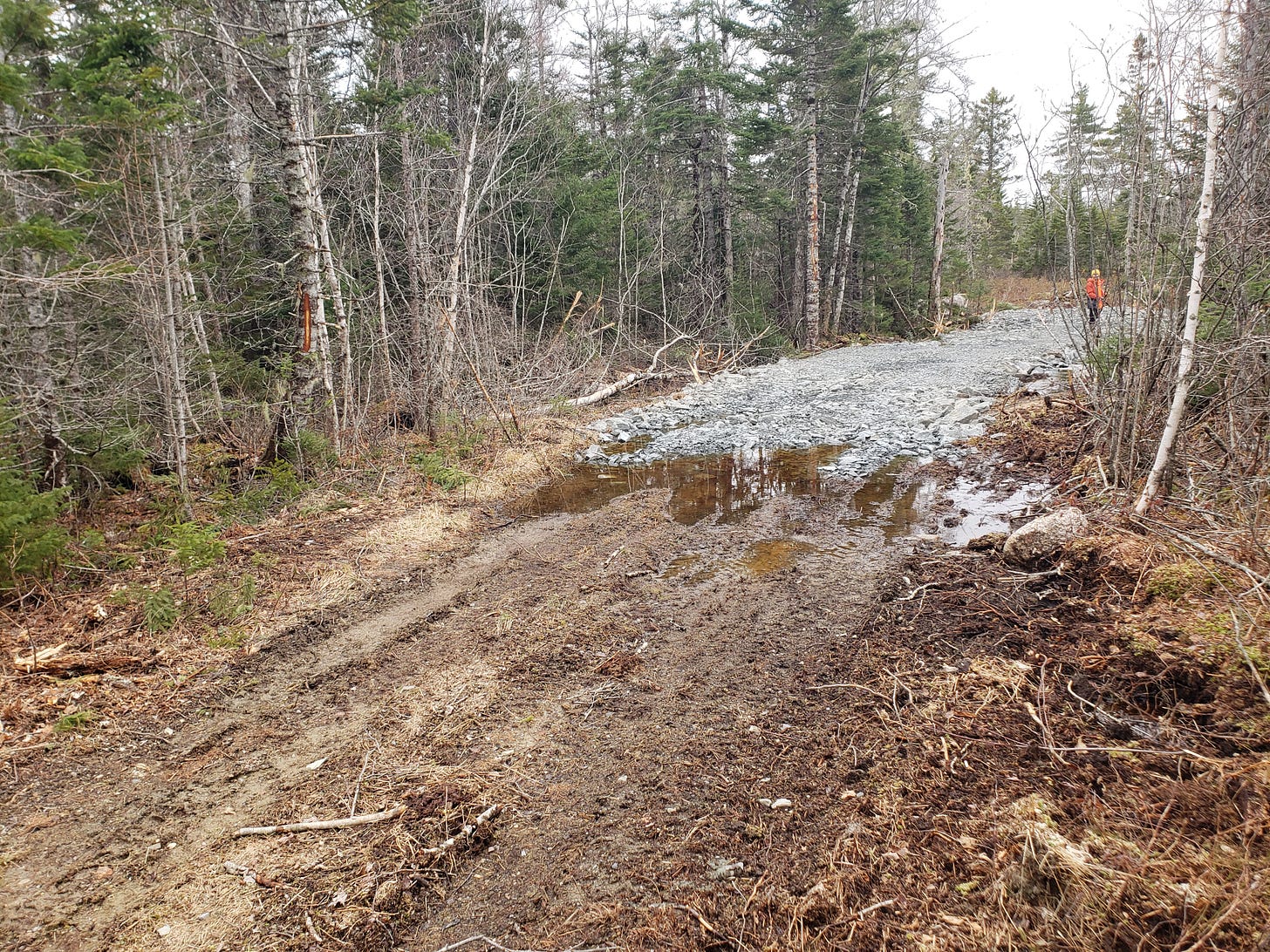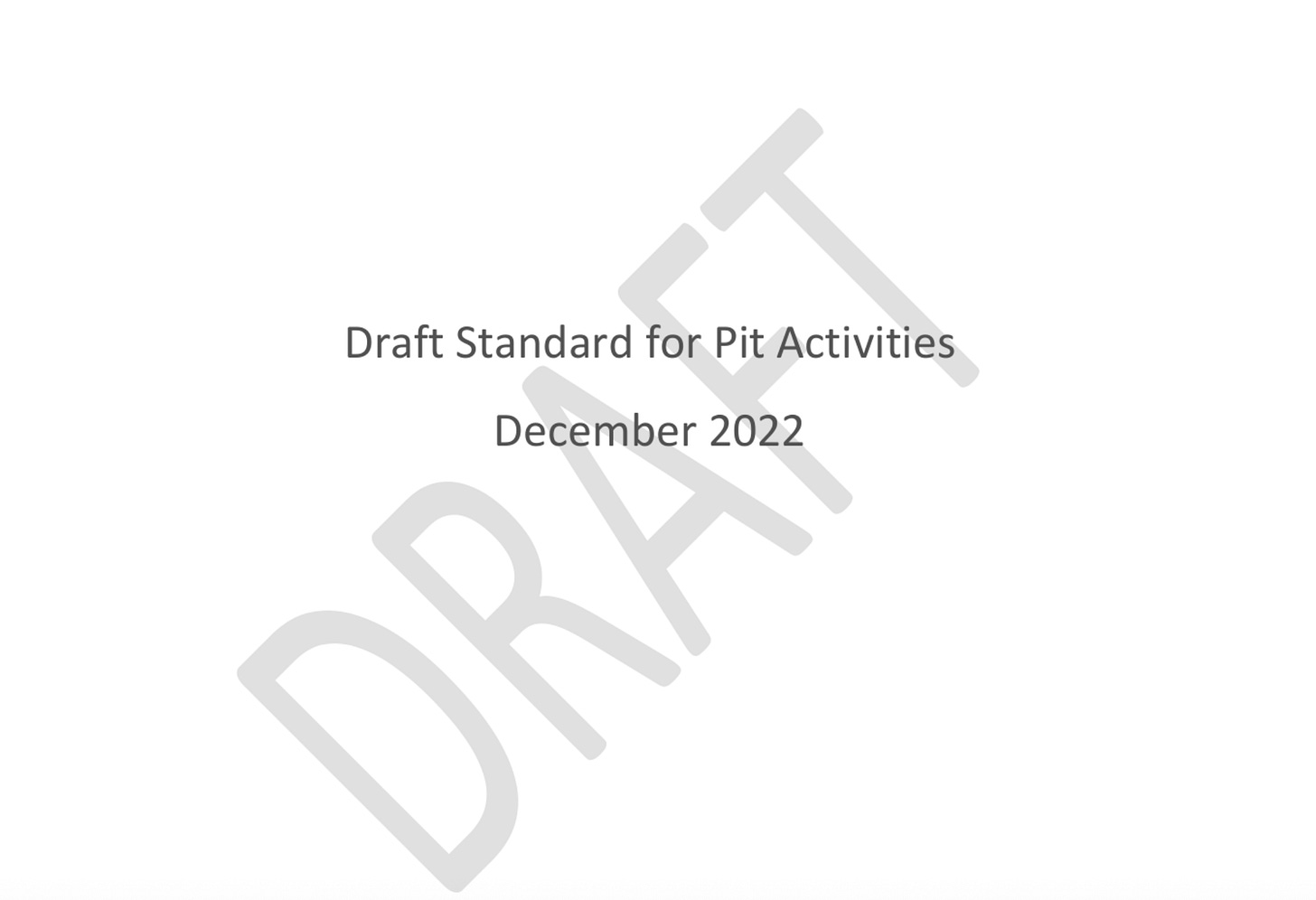Quarry Quagmire
Nova Scotia's department of Environment and Climate Change 'draft standard' prohibits quarries in town drinking water supply areas, so why was the Caribou Lake quarry approved in Bridgewater's?
According to internal documents accessed through Freedom of Information, in January 2023—around the time the Caribou Lake quarry project located within Bridgewater’s drinking water supply’s protected watershed was being considered for approval—the Nova Scotia Department of Environment and Climate Change (NSECC) had a “draft standard” for pits and quarries that prohibited it.
The department approved the quarry anyway.
The quarry, owned by Gerald W. Veinot Excavation Co. Ltd, is slated to be located within the Hebb Lake, Minamkeak Lake, and Milipsigate Lake Designated Protected Watershed—an area managed by the Public Service Commission of the Town of Bridgewater (PSCB). The PSCB established a Source Water Protection Plan (SWPP) for the watershed with the objective of managing and maintaining a safe water supply for the town and surrounding area.
Within the 273 pages of emails and documents received through FOI, there was an email dated January 9, 2023 from Lanying Zhao, a regional hydrologist with NSECC, and Barry Gillis, the department’s environmental engineer.
Zhao writes:
For reference, the draft pit standard specifies no pit is within the municipal drinking water supply’s source water protection area and within any provincially designated protected water area.
Gillis didn’t appear to acknowledge this rather significant piece of information. As we’ll see, Gillis seemed to be receiving direction from somewhere, but the documents don’t specify exactly where or from whom.
As a follow up to the initial FOI package, I sent in another request — this time for the “draft pit standard,” itself — the one Zhao refers to. Based on my past experience with the department, I knew it would be a waste of time to go through normal communication channels.
A couple of weeks ago I received the “Draft Pit Standard” — fully redacted except for the cover page (see below). Clearly it does—or at least did—exist. In the meantime, I filed a “Form 7,” also known as a “Request for Review,” with Nova Scotia’s Information and Privacy Commissioner, David Nurse, and will report back if anything of note comes of that.*
The significant point here is that we have seen how the Houston Conservatives have demonstrated a contempt for democracy by ignoring the public will on coastal protection, secretly changing public policy on wetlands, and lifting bans on toxic mining.
Ignoring another policy — namely what was contained in the “Draft Standard” — seems to be just another example of this contempt in action.
Atlantic Whitefish, Courtesy Ian Manning (Wikimedia)
In addition to it being within the watershed supplying Bridgewater with its drinking water, the Caribou Lake project also happens to be located in a very important watershed for the Atlantic whitefish. Back in 2022 I wrote a 3-part series, The Atlantic Whitefish Whitewash, where I laid out how planned logging in the watershed was a really bad idea for these fish: the forest is part of an ecosystem that feeds and protects the blackwater of Minamkeak Lake, one in an interconnected system of three lakes that are home to the last surviving wild population of endangered Atlantic Whitefish.
Let that sink in: the last surviving wild population.
That alone should give the province enormous pause when it comes to any industrial development, but apparently it does not.
The quarry was also approved despite the fact there has been an application by the Bridgewater Watershed Protection Alliance for the crown lands in the Petite Riviere watershed to receive wilderness area designation. This request has been in place for almost three years. It has also been documented that there are 20 rare species in the watershed (endangered, threatened, at risk and vulnerable). The NSECC has not made a decision regarding the application for wilderness area designation, and yet, they approved a quarry that will be accessed through an easement over crown lands that the aforementioned environmental group asked to be protected.
Both the Town of Bridgewater and the Municipality of Lunenburg are in support of the environmental group’s wilderness area designation request.
On August 2, 2022 the PSCB wrote to Minister Halman saying: “The protection of the [Petite Riviere] watershed has been a concern of the [PSCB] for decades,” and a “Wilderness Area Designation is supported for these lands” as it would:
Two days later the Municipality of the District of Lunenburg (MODL) followed suit, with a letter to Halman also expressing its support for a Wilderness Area designation for the public lands in the Petite Riviere Watershed.
But despite this unanimous municipal support from two town councils for the Bridgewater Watershed Protection Alliance’s request for the Wilderness Area designation, the NSECC made no effort to contact the environmental group to even let them know about the competing application for an industrial project that would traverse and impact the very same crown lands it was hoping the government would protect.
Earlier this year, George Buranyi, who represents the Bridgewater Watershed Protection Alliance wrote in an email:
Our issue is that DECC [department of Environment and Climate Change] made no effort to contact us despite knowing we had expressed interest in protecting crown lands. Minister Halman noted there was consultation. However, there are serious flaws in a consultation process that is called public but fails to reach those who are known to be invested in having input on the issue the process seeks to consult the public about. This obviously also requires a review and policy change to ensure that more effective means are employed to inform the public.
Buranyi wonders how the two competing requests were handled.
Did “the protections area team and industrial team communicate at all” and come to the realization that “there were applications before them that affected each other?” Buranyi asks in an email.
“My guess is that they did not. If they did then DECC deliberately avoided a decision on the wilderness application in favour of the quarry which required access through crown lands that we wanted protected. The honest thing to do was have a proper consult or the courage to say we are granting the quarry access despite your request,” he writes.
Public Service Commission of Bridgewater Watershed. The Caribou Lake quarry is located near Caribou Lake, about 1.5 km from Minamkeak Lake, well within the red boundary line for the PSCB protected “watershed designation” area.
About 1.3 km from Lapland Rd. is this spot on the access road traversing crown land, en route to new quarry location. According to Buranyi, the road will impact two lichens that have been designated at-risk — wrinkled shingle lichen and blue felt lichen— as well as a wetland that has been deemed by the department maps as being of special significance. Photo: George Buranyi
When I submitted the initial FOI request on the matter, to find out how the consultation on the Caribou Lake project was conducted, I received a cost estimate of $330. I asked for the fees to be waived, and provided the following rationale:
The issue of public consultation in a democracy is an important, even crucial one. In this case, a group—[the Bridgewater Watershed Protection Alliance]—which is very heavily invested in protecting those lands was not contacted or informed. I’m trying to find out what happened and believe this is in the public interest, and given that, the fees should be waived or at least seriously reduced… these kinds of fees are not only prohibitive but could mean the story doesn’t get pursued at all. I know that is not the intention of the FOI office, but it would nevertheless be the result.
They decided to waive the fees.
As an aside, I provide this information just as a FYI: it can sometimes take several months and numerous hoops just to get a tiny morsel of information from the government. This effort can sometimes result in nothing of note, and is invisible to readers.
The only part of the Draft Standard that wasn’t redacted in my FOI request— the cover page.
The Caribou Lake project is essentially 3.99 ha in size. Quarry proposals exceeding 4 ha in size would have required a full Environmental Assessment and the department could have required that a Community Liason Committee also be established— a much heftier community consultation requirement. But, lucky for Veinot Excavation, its proposal is 0.01 ha shy of 4 ha, and this includes an 800 metre-long and 12-metre wide access road (easement) through crown land. Interestingly, the aforementioned Gillis—the department’s environmental engineer— did let Veinot know ahead of his submission that anything 4.0 ha or larger would trigger a more robust process.
Within the initial FOI package re: consultation there is a 2-page report dated April 25, 2024, in which Gillis summarizes the project and recommends that an approval be granted.
He writes that as part of Aboriginal consultation, an Archaeological Resource Impact Assessment (ARIA) is required before a project can be approved, but he notes that he decided to reverse that process:
“I would normally wait until this [ARIA] is complete prior to making a recommendation for approval, but I was advised to incorporate the requirement into the approval. This has been done.”
It’s not clear who advised Gillis to reverse the “normal” procedure.
Apparently the ARIA didn’t find “anything of note,” but it does raise the question, why was an approval set in motion in this case prior to the ARIA being carried out?
Letters were also sent out to all First Nations in the province in January , 2024, with a month to reply.
As for public consultation generally, not much was required because of the physical size of the project, as previously mentioned. An ad was carried for two days in the Chronicle Herald in February 2023, with a reply date roughly 30 days later. No comments were received.
According to the FOI package, the Town of Bridgewater did make the NSECC aware of their stake in the project through a letter dated December 8, 2022, directed to the attention of Gillis.
The letter was written by Audrey Buchanan, the Environmental Services Manager for the Public Service Commission of Bridgewater (PSCB), which deemed the project of “high concern” and requested that information be provided with assurances that the there would be “no impact either through blasting or quarry operations to the existing water table/ groundwater”; “confirmation that the water table location has been located to ensure blasting or extraction operations do not enter or alter the watertable”; and “no impact either through blasting or quarry operations to the existing surface water streams that directly impact our potable water supply.”
According to NSECC staff, these concerns were “addressed within the approval.”
No mention is made of the “Draft Standard” which raises the question, was the PSCB unaware of its existence?
I’ve contacted the PSCB for comment, but did not hear back in time for publication.
Buranyi of the Bridgewater Watershed Protection Alliance tells me that he was not aware of there being a “Draft Standard.”
Gillis’ recommendation for approval also seems to ignore the quality of information received from Veinot Excavation with regards to their water monitoring plan. In February and March of 2023, the NSECC asked the proponent for a proposed ground and surface water monitoring plan— essentially a hydrological and hydrogeological report on the protection of the municipal water supply.
On September 20, 2023, the NSECC received “Quarry Plan and Water Resources Management Plan,” written by an Antigonish-based consulting firm W.G Shaw and Associates, for the proponent.
Map showing access road through crown land and quarry, not far from Caribou Lake and within the Minamkeak Lake watershed, one in an interconnected system of three lakes that are home to the last surviving wild population of endangered Atlantic Whitefish. Source: “Veinot Quarry Archaeological Resource Impact Assessment Screening and Reconnaissance, 2024, Lapland, Lunenburg County. Final Report.” Cultural Resource Management Group Ltd, May 2024.
It’s being called the Caribou Lake project because the quarry would be located within the Caribou Lake Tertiary Watershed, which according to the Shaw report contains a total watershed area of 400 ha. As well, the project is roughly 175m from Caribou Lake.
According to the consultant’s report:
“Local surface water drainage and runoff from the proposed quarry is by overland flow toward the southeast ultimately flowing into the main channel of Caribou Brook. The operation of the quarry will result in some changes in local surface water runoff patterns which may affect the Caribou Lake watershed. Exposed surfaces on the quarry floor and on access roads can result in flashy runoff patterns during heavy rainfall and snow melt events. The planned drainage ditches, erosion control berms and sedimentation pond will be designed to mitigate these effects.”
In January and February of 2023, Veinot was provided with detail of what should be included in the hydrological/ hydrogeological report. On January 6, Gillis specifically informed the company that the report would need to discuss impacts to the municipal drinking water supply.
But in the end, the report was as vague as could be, lacking in specific detail, and no mention of how the quarry might impact the safety or quality of Bridgewater’s water supply.
In fact, there was no mention of the Town’s water supply at all.
And yet, Gillis recommended it for approval.
So, if there was a Draft Standard for Pit Activities that prohibited pits within municipal drinking water supply source water protection area and within any provincially designated protected water area, then what happened to it? And why was the pit approved given the startling paucity of specifics provided in the consultant’s report, and the omission altogether of any mention of Bridgewater water supply?
The government is keeping important information hidden from public view, and voices from the affected communities are being downplayed or silenced altogether.
Increasing opacity in a so-called democracy is problematic on its own, but it becomes even more worrying when combined with the nature of what’s being rammed through: dangerous, destructive industries that will create sacrifice zones and downstream effects unless there is a course reversal, or at the very least, an authentic commitment to ensuring the human right to a healthy environment, and the protection of species teetering on the brink of extinction.
{If anyone past or present at the NSECC knows anything about how this happened, please get in touch, either by replying to this emailed post, or emailing info@lindapannozzo.ca. Thank you!}








Thanks for digging deeper into this, Linda. That's very sleazy about the area of the quarry being 3.99ha, so that it would be exempt from greater scrutiny.
It's alarming how the ECC doesn't seem to gave a damn about protecting areas that deserve serious protection. It's almost the opposite - they seem bound and determined to give everything away to anyone who comes along wanting to do some project.
It's also incredibly worrisome that they don't seem to care much about protection of watersheds. Unbelievable.
re: "A couple of weeks ago I received the “Draft Pit Standard” — fully redacted except for the cover page."
Apparently your FOI was deemed "frivolous, vexatious or without enough specifics" , the Houstonian standard (as reported by yourself) for rejecting such inquiries.
vex·a·tious
/vekˈsāSHəs/
adjective
causing or tending to cause annoyance, frustration, or worry..
So if a journalist's search for important information in the public interest causes the Blackrock Boy and his underlings to feel 'annoyed, frustrated or worried' - as of course any inquiry into their malfeasance and serial subversions of democracy would - that search needs to be shut down. Or fully redacted as the case may be. Truth is always "vexatious" to tyranny.
Great work as always, Linda. The public really needs to mobilize around such issues. Our democratic institutions hang by a thread.